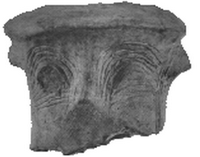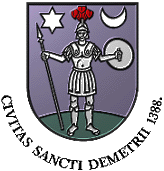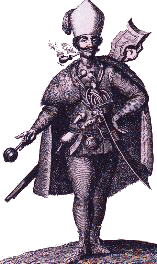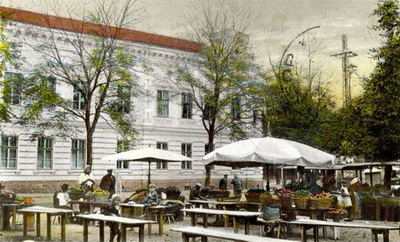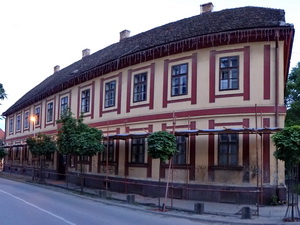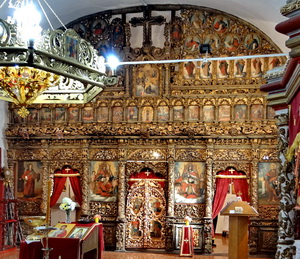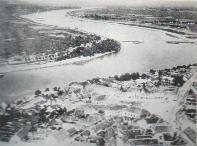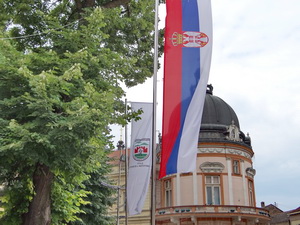The modern town of Sremska Mitrovica occupies the area formerly inhabited by various pre historical peoples and cultures whose origin goes back to the first occurrences of the organized human life in the region of Srem. The archaeological research work, carried out through several years, allowed us to fix clearly the continuity of life from the later part of the Stone Age (Neolithic), through the Copper Age (eneolithic), the Bronze Age, the early period of the Iron Age (Hallstatt) and the late period of the Iron Age (La Tene) to the arrival of Romans, when Sremska Mitrovica enters the historical epoch, i.e. the period of antiquity.
Sidebar
Brief history of Sr. Mitrovica
Sremska Mitrovica
ANCIENT SIRMIUM
Sirmium entered the history in the course of the last decades of the old era with the arrival of Roman legions, but the founders of the town (civitas) were the Pannonian Amantins and Celts, as inhabitants of the pre historical Sirmium. As a Roman settlement, Sirmium developed very rapidly and in the period of the Flavian dynasty (69 – 96 of our era) the town was granted the status of a colony.
SIRMIUM IN THE BYZANTINE PERIOD
In the IV century in the forefront of Sirmium arose religious conflicts, first between the pagans and the Christians, which in 304, turned, into bloody clashes. The first bishop of Sirmium Irenaeus was put to death and after him also St. Demetrius, whose cult was later transferred to Saloniki.
CIVITAS SANCTI DEMETRII
After the withdrawal of Byzantine, Sirmium also changed its political status. Within boundaries of Hungary, it was no more a frontier town and consequently was given up to a slow decay, for there were no more favorable conditions for its further development. In common with the ancient and Byzantine denominations and relations its old name also disappeared.
SEHER MITROVICA - Mitrovica under the Turkish rule
The Turkish traveler Evliya Celebi recorded in his writings that Mitrovica had been conquered by the Bosnian sandjak bey Husrev-bey. After a few short wars in which the last Serbian titular despot Pavle Bakic had lost his life, Srem and the conquered regions of Slavonia were governed by Mehmed-bey Jahiapalic.
SEAT OF THE HEADQUARTERS OF THE REGIMENT OF CONFINES
After the final expulsion of Turks from Srem. Mitrovica came, under the provisions of the Peace Treaty of Pozarevac in 1718. under the Austrian rule. Until the year 1745, it formed a part of estates of the counts Coloredo and Pejačevic and afterwards it belonged to the Military Confines of Srem...
MITROVICA AS AUTONOMOUS MUNICIPALITY
The present contribution comprises three periods of Austrian administration at Sremska Mitrovica, the last years of the existence of the Military Confines (1848 — 1881), the period of the rise of the Serbian middle class (1881 — 1914) and the event which take place in the course of the World War I (1914 — 1918).
ARCHITECTURE OF THE XVIII and XIX CENTURIES
Sremska Mitrovica has a secular urban tradition. On a comparatively small area with restricted material possibilities and under constant pressure from outside, there developed a lively constructing activity which has left visible traces.
ARTISTIC ACTIVITY IN THE XVIII and XIX CENTURIES
In the XVIII century Mitrovica was not an important artistic center considering the immediate proximity of Sremski Karlovci, seat of the Metropolitan, where the artists of that time gathered to work the needs of churches on the territory of the archbishopric. In the second half of the XVIII century, the old church of St. Stephen's obtained a richly carved baroque iconostasis, work of an anonymous master, with the paintings by Teodor Kracun, the most renowned artist of the baroque painting in Vojvodina.
SREMSKA MITROVICA DURING THE INTER-WAR YEARS
This contribution present the past of the town between the two wars After the World War I, Sremska Mitrovica came within the frontiers of the Kingdom of Serbians, Croats and Slovenes. In the new State, the bourgeoisie class did not avail itself of the possibilities for the economic and communal development, but rather wasted its forces in inter party struggles and, consequently, the town stagnated in all respects.
SREMSKA MITROVICA TODAY
Nowadays Sremska Mitrovica is one of the most developed municipalities of Vojvodina and Serbia and it is an important administrative, economic, cultural and educational centre of Srem, being the centre of the County of Srem.
